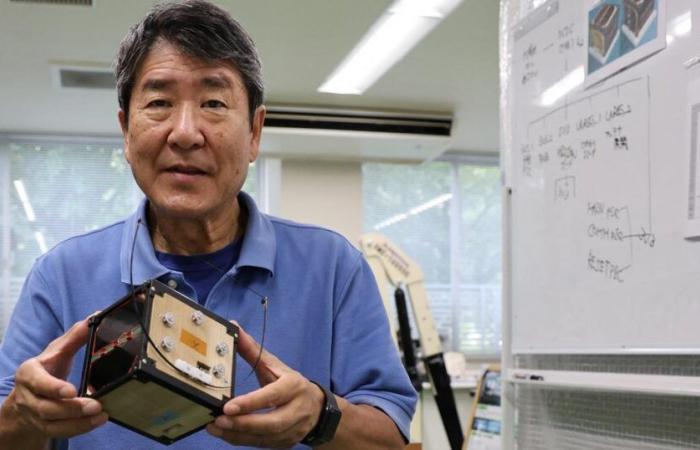The world’s first wooden satellite took off Tuesday aboard a SpaceX rocket. LignoSat, which looks like a 10-centimeter cube, could be a solution to space waste, its Japanese designers hope.
Weighing just 900 grams, the experimental LignoSat satellite was launched aboard an unmanned rocket from NASA’s Kennedy Space Center in Florida, Kyoto University’s Center for Space Studies said.
No space junk
The objective of the material is to anticipate its inevitable end of life: when it eventually re-enters the atmosphere, the wood should burn without generating the usual metallic particles associated with satellites falling back to Earth.
The magnolia wood satellite, installed in a special container prepared by the Japan Aerospace Exploration Agency, “will soon arrive at the ISS and will be sent into space about a month later” to test its strength and durability. sustainability, said a spokeswoman for LignoSat co-developer Sumitomo Forestry. The device must remain in orbit for 6 months.
External content
This external content cannot be displayed because it may collect personal data. To view this content you must authorize the category Social networks.
Accept More info
Extreme conditions
Data will be sent from the satellite to researchers, who can check for signs of deformation and determine whether it can withstand extreme temperature changes. In the laboratory, it has been successfully tested between -150 and +150 degrees.
According to its designers, LignoSat is as strong as the aluminum usually used to design the thousands of nanosatellites put into orbit.
“Satellites that are not made of metal should become more widespread,” said Takao Doi, astronaut and professor at Kyoto University, during a press conference at the beginning of the year.
Radio subject: Didier Pradervand
Web text: cab with agencies






